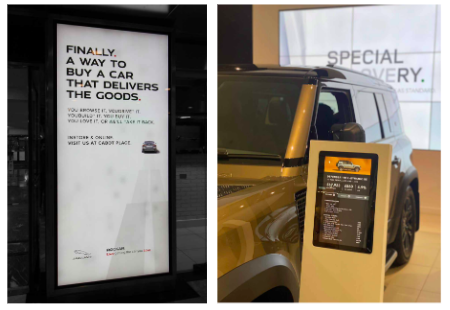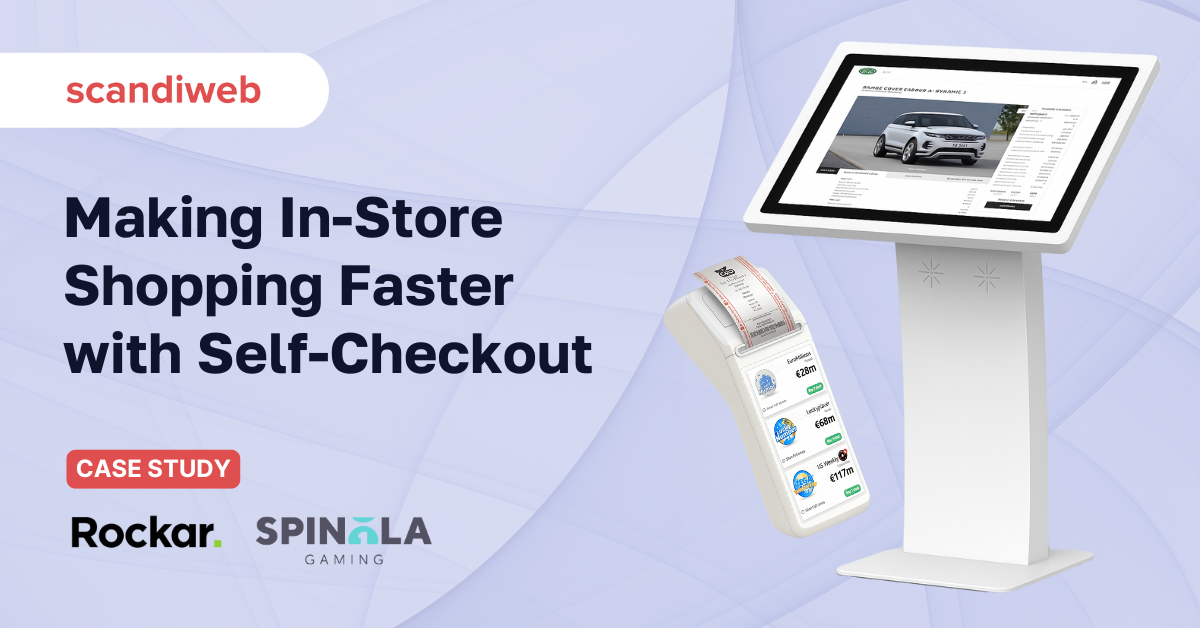Checkout expectations have changed. Shoppers now demand speed and control with ease, whether online or in-store. Self-checkout solutions deliver exactly that.
Did you know that about 96% of consumers have used a self-checkout kiosk at least once? And 77% of them do so because it’s faster.
Allowing customers to scan, pay, and go on their own terms helps reduce checkout wait times and cut operational costs, thereby improving satisfaction, especially among younger, digital-first shoppers.
In this article, learn more about the importance of self-checkouts in retail and see two successful case studies from our recent projects.
Self-checkout in retail: why it matters
Today, when speed and convenience influence customer loyalty, self-checkout kiosks are becoming a core part of the retail experience.
Retailers using self-checkout benefit from:
- Shorter checkout times and fewer frustrated customers
- Fewer staff interventions
- Higher accuracy in transactions
- A great checkout alternative for customers with varying demographics and technical knowledge.
Research shows effective self-checkout setups can cut wait times by up to 40% while increasing customer loyalty.
Best practices for efficient self-checkout design
It’s important to design a checkout experience that is convenient and accessible for everyone. To make sure of a smooth flow, these are the best practices to keep in mind:
- Make an easy-to-use interface to reduce confusion and speed up the process
- Use large fonts and high contrast to help users of all ages and abilities navigate the checkout confidently
- Minimize steps and optimize the scanning process for speed
- Make payments quicker by showing multiple options, and handle errors effectively with clear instructions and accessible help
- Give shoppers the choice to use loyalty programs or check out as guests, depending on what they prefer.
When these principles are put into practice, self-checkout can be both effective and enjoyable.
Also read:
How to Implement Self-Checkout Right: Best Practices
Now, let’s look at two successful examples that illustrate how self-checkout systems can improve customer experience and store performance.
Self-checkout case studies
Making car buying easier with self-checkout
Over the past several years, scandiweb has worked closely with Rockar, an automotive retail company in the United Kingdom, to change the way people buy cars.
We built the first digital platform for buying premium vehicles fully online. The platform offers features that were rare in the industry at the time, all available in one, easy-to-navigate interface:
- Configure vehicles
- Apply for financing
- Test drive booking
- Trade in the old car, and complete the purchase entirely online.
To bring the digital journey full circle, we extended the online experience into Rockar’s physical showrooms by developing a custom in-store point-of-sale (POS) solution. Touchscreen kiosks in the showrooms replicate the website’s full functions. Customers can browse car models, explore financing options, book test drives, and place their order right there, without sales pressure.
The system uses Magento and a microservices architecture, ensuring data stays in sync in real-time. This lets customers begin online and continue in-store, or vice versa. It links digital and physical experiences directly.

Connecting the online and physical store processes changed how Rockar used its showrooms. Staff became more like helpers, guiding customers rather than traditional sales agents. This puts the customer in charge, making the car-buying process clear and independent from start to finish.
Scaling lottery sales with custom POS
Another example is Spinola, a major lottery operator in Southern Asia. They needed a system capable of managing thousands of retail locations and processing high volumes of real-time transactions quickly and reliably.
We designed and delivered a system built specifically for their operational requirements. It provided the necessary speed and reliability, supporting their expansion plans without interrupting their existing operations:
- Custom POS app solution addressing unique business requirements
- Multiple pre-made lottery types and individually configurable widgets
- Frontend data integration from multiple sources
- Real-time data exchange supporting lotteries and payouts
- Parallel delivery streams enabling fast feature rollout without disrupting the core system.
Take a look at the video below to see how the Spinola self-checkout system works.
The solution supports Spinola’s current markets and is ready for expansion into new regions. Spinola now has a reliable and adaptable POS system that successfully runs Spinola’s daily lottery operations across thousands of retail points. It was deployed on more than 15,000 devices in the first country.
To understand how we built and implemented the custom POS system for Spinola, read this in-depth case study.
Final thoughts
Self-checkout systems change how people shop, giving customers more control. Businesses also gain by simplifying work and cutting costs. At scandiweb, we’ve seen this impact directly; custom self-service setups shift industry practices.
As customer habits change, custom, flexible self-service systems become essential. Across multiple business sectors, our self-checkout solutions help companies meet customer needs through easy, enjoyable shopping experiences.
Considering self-checkout for your retail store? Our UX experts will help you get it right. Reach out to us by filling out the contact form for a free consultation.


Share on: